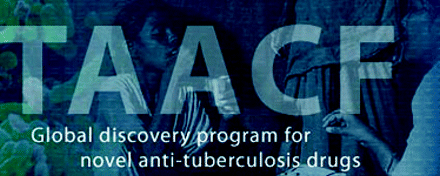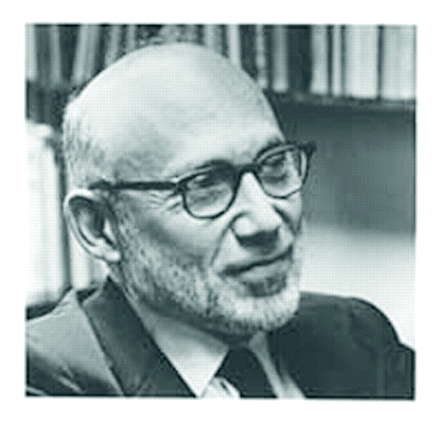Sites of interest on the World Wide Web—edited by David Roman
The “Other” Opioid Receptor
Many of us are most familiar with the mu-opioid receptor, and its famous ligand, morphine. Whereas mu- and kappa-agonists have significant analgesic action, the delta-opioid agonists have limited analgesic qualities. In this month’s Molecular Interventions, Emily Jutkiewicz examines the unique properties of delta-agonists. The differences in the actions of these receptors lies partly in their structures, and a very thorough analysis of the structures of the opioid receptors has been undertaken by Daniel Strahs and Harel Weinstein at the Mt. Sinai School of Medicine. Their work, located at http://physiology.med.cornell.edu/faculty/hweinstein/online/dan_paper.html focuses on analyzing the molecular dynamics of receptor structures, based on homology modeling. Their rigorous approach has yielded some interesting models, including a figure (see their Figure 3) that shows how the position of helices may be different in mu-, kappa-, and delta-opioid receptors, opening the door on the structural determinations that may provide mu- and kappa-agonists with actions that differ from the unique delta-opioids, which exhibit unique antidepressant-like effects.
Tuberculosis: Scourge Emergent
In this month’s MI, Stanley Scheindlin provides us with a historical perspective on the development of tuberculosis (TB) treatments. With the threat of avian flu circulating in the media, it is relevant to examine how disease outbreaks have led to advances in our medical knowledge and treatment strategies—even serendipitous ones. For example, the development of anti-tubercular medicines led to the development of anti-depressant drugs.

There are several informative websites that highlight the etiology of the TB illness. The National Institute of Allergy and Infectious Diseases (NIAID) has assembled a fact sheet on TB, located at http://www.niaid.nih.gov/factsheets/tb.htm. This resource focuses on current TB treatments, diagnosis, and susceptibilities. Although the incidence of this disease has been on the decline for many years, there were still over 14,000 cases reported to the CDC in 2005. Another website, http://www.taacf.org/ about-TB-background.htm is provided by the Tuberculosis Antimicrobial Acquisition and Coordinating Facility (TAACF), established by the NIAID for the establishment of a global research program for the discovery of novel anti-tuberculosis drugs. The TAACF provides testing, screening, and evaluation of new lead-compounds for the treatment of TB.
Join the fight against TB. The Stop TB Partnership (http://www.stoptb.org/) is an enormous resource for those looking to fight a good fight. From advocacy, communications, and social mobilization, to work on new and better diagnostics, vaccines, and drugs, to work on multidrug-resistant TB and the susceptibility of patients with HIV/AIDS to TB infection, to Directly Observed Treatment Short-Course (DOTS) treatment for patients suffering with the disease, the Stop TB Partnership is a worthwhile global group trying to eradicate one of mankind’s most formidable foes.
The Role of Endogenous Cannabinoids
The review by Chris Felder and colleagues in this issue of MI highlights the fascinating world of endogenous cannabinoids. Since the discovery and subsequent de-orphanization of central and peripheral cannabinoid receptors, these receptors have been presented as a novel target for the development of new therapeutics. The lipid nature of the endocannabinoids reflects the complex pharmacology that has been associated with marijuana. Therefore, the appropriately named website http://www.cannabis.net/endocannabinoids/index.html, provides an interesting prospective on the endogenous (and exogenous) cannabinoids, including links to articles on can-nabinoid receptors, cannabinoid antagonists, cannabis and schizophrenia, and, of course, anandamide.
Famous Scientists for $500, please….

The National Library of Medicine has established a Web site to highlight the profiles of twentieth century leaders in science. These Profiles in Science, located at http://profiles.nlm.nih.gov provide detailed biographical and scientific information about those men and women who shaped modern biomedical research. The profiles include Novel Laureates (e.g., Salvador E. Luria, Barbara McClintock, Marshall W. Nirenberg, Linus Pauling) and Lasker Award winners, including Florence Sabin (“…the first woman to hold a full professorship at Johns Hopkins School of Medicine, the first woman elected to the National Academy of Sciences, and the first woman to head a department at the Rockefeller Institute for Medical Research”) and Edward D. Freis (“…the father of the first double-blind, multi-institutional controlled clinical trial of cardiovascular drugs, the Veterans Administration Cooperative Study on Antihypertensive Agents”). We encourage you to peruse this useful Web site. This month highlights the work of Joshua Lederberg, including his work using E. coli genetic techniques to establish many fundamental techniques we use in molecular biology everyday.
- © American Society for Pharmacology and Experimental Theraputics 2006






